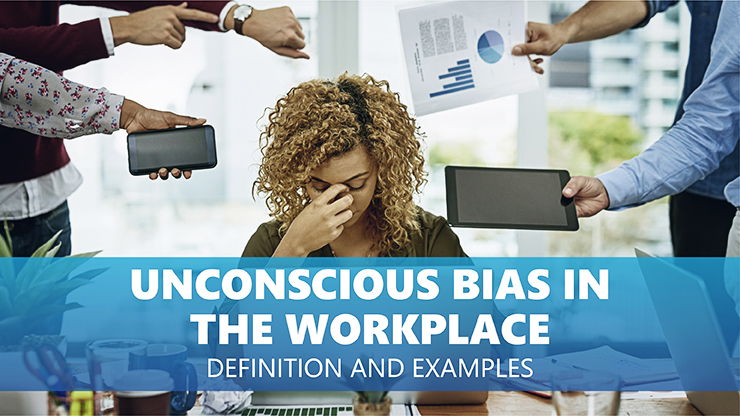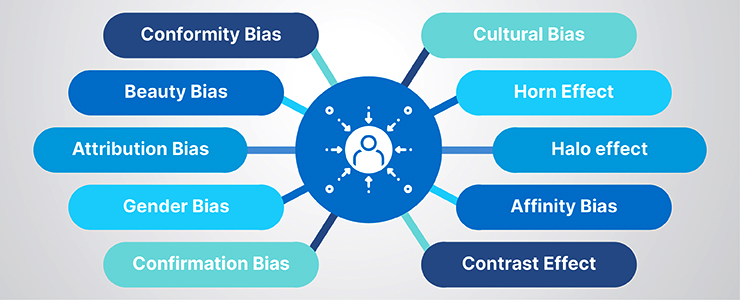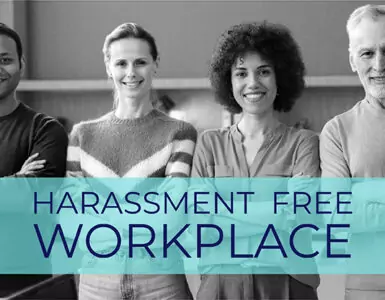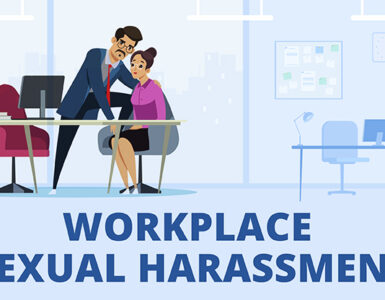What is unconscious Bias?
Unconscious Bias (also known as implicit bias) refers to the automatic judgments and assessments we make about people and situations, based on our previous experiences, cultural norms, and ingrained beliefs, without our conscious awareness. These biases can encompass a wide range of areas, such as race, gender, age, religion, and many others.
Some key points about unconscious bias:
- Everyone has unconscious biases, regardless of how open-minded they believe they are.
- These biases can influence decisions in areas such as recruitment, team development, promotions, and performance evaluations.
- Unconscious biases can contribute to stereotypes and limiting beliefs about certain groups of people, which can perpetuate systemic discrimination and inequities.
- It’s crucial to be aware of these biases, as acknowledging them is the first step to minimizing their impact.
What is unconscious bias in the workplace?
Unconscious bias in the workplace refers to the automatic, subconscious judgments and preferences that people hold about colleagues, candidates, clients, or other workplace-related entities based on their background, appearance, accent, gender, age, or other personal characteristics. These biases can greatly impact decision-making, interactions, and dynamics within an organization.
Why should HR leaders care about unconscious bias in the workplace?
HR (Human Resources) leaders play a crucial role in shaping organizational culture, policies, and practices. Addressing unconscious bias is vital for several compelling reasons:
Fairness & Equity: To ensure that all employees, irrespective of their background, have equal opportunities and are treated fairly in all aspects of their employment, from hiring to promotions.
Diversity & Inclusion: Diverse teams bring a broader range of perspectives, experiences, and ideas, leading to better decision-making and innovation. Unconscious bias can hinder the formation and effective functioning of such diverse teams.
Legal & Compliance Risks: Allowing biases to affect employment decisions can result in legal challenges and compliance issues. Discrimination lawsuits or violations can be costly, damaging both in terms of financial penalties and organizational reputation.
Talent Attraction & Retention: Modern job seekers value inclusive workplaces. Organizations that actively address unconscious biases are more attractive to top talent and have better retention rates.
Enhanced Company Reputation: Being seen as an equitable and inclusive employer can enhance the company’s brand, making it more appealing to customers, investors, and potential employees.
Employee Morale & Productivity: When employees feel they are judged on their merits rather than biases, they are likely to be more engaged, motivated, and productive.
Decision Making: Unconscious bias can lead to flawed decision-making. Addressing these biases ensures that decisions are made on objective data and a broader range of perspectives rather than unchecked assumptions.
Economic Benefits: Numerous studies suggest that companies with diverse leadership and teams tend to be more profitable and innovative.
Cultural Competence: In a global marketplace, companies interact with diverse clients and partners. An understanding and mitigation of unconscious bias can lead to better cultural competence and effectiveness in global operations.
Future-Proofing the Organization: As societies become increasingly diverse, addressing unconscious bias is not just the right thing to do—it’s a business imperative. Organizations that fail to adapt risk becoming irrelevant.
16Examples of Unconscious Bias in the Workplace
Unconscious biases are subconscious attitudes or stereotypes that can influence our actions and decisions without our awareness. They can affect various aspects of the workplace, from hiring to team dynamics.
1. AFFINITY BIAS:
Definition: A tendency to bond with people who have similar backgrounds or interests.
Impact: Hiring for “culture fit” might mean favoring candidates with similar backgrounds, potentially hampering team diversity.
Mitigation: Recognize commonalities with candidates but focus on their skills and unique contributions to ensure a diverse “culture add.”
2. AGEISM:
Definition: Discriminating based on age, usually against older individuals.
Impact: Older employees may face challenges in career progression and job opportunities.
Mitigation: Offer training to understand ageism myths and promote age diversity in hiring.
3. ANCHOR BIAS:
Definition: Over-reliance on an initial piece of information to make decisions.
Impact: It can distort evaluations by sticking to initial perceptions.
Mitigation: Consider all aspects of a candidate and avoid fixating on one particular detail.
4. ATTRIBUTION BIAS:
Definition: Judging based on prior interactions or perceptions.
Impact: Candidates may be judged based on isolated incidents rather than their overall potential.
Mitigation: Avoid making snap judgments; ask clarifying questions to understand candidates better.
5. AUTHORITY BIAS:
Definition: Overvaluing opinions of authority figures.
Impact: It can stifle creativity and employee engagement.
Mitigation: Encourage an environment where all voices are heard and valued.
6. BEAUTY BIAS:
Definition: Associating attractiveness with competence and success.
Impact: It can favor “attractive” candidates and discriminate against others.
Mitigation: Use structured recruiting processes and technologies to focus on qualifications over appearance.
7. CONFIRMATION BIAS:
Definition: Favoring information that aligns with existing beliefs.
Impact: It can lead to biased evaluations based on initial perceptions.
Mitigation: Use standardized, skills-based questions during interviews.
8. CONFORMITY BIAS:
Definition: Aligning opinions with the majority.
Impact: Individual opinions might be suppressed in group settings.
Mitigation: Gather individual feedback before group discussions to ensure diverse viewpoints.
9. CONTRAST EFFECT:
Definition: Comparing and exaggerating differences between things.
Impact: Evaluations can be skewed by previous encounters.
Mitigation: Evaluate candidates based on set criteria rather than relative comparisons.
10.GENDER BIAS:
Definition: Preferring one gender over another.
Impact: It can hinder diversity and equal opportunities.
Mitigation: Use anonymous screenings and set diversity goals.
11. HALO EFFECT:
Definition: Viewing someone positively due to a single favorable trait.
Impact: Overall evaluations might be swayed by one impressive detail.
Mitigation: Evaluate holistically, considering all factors.
12. HEIGHT BIAS:
Definition: Judging based on height.
Impact: Perceptions might be influenced by a person’s stature.
Mitigation: Focus on skills and experiences rather than physical attributes.
13. HORN EFFECT:
Definition: Negative judgments based on a single unfavorable trait.
Impact: A small factor might negatively influence overall perceptions.
Mitigation: Understand the reason for negative feelings and ensure they don’t overshadow a candidate’s potential.
14. NAME BIAS:
Definition: Judging based on names, especially those linked to ethnicity.
Impact: Candidates might face discrimination based on their name.
Mitigation: Use anonymous application reviews.
15. NONVERBAL BIAS:
Definition: Forming opinions based on body language.
Impact: Misinterpretations might arise from nonverbal cues.
Mitigation: Understand that everyone expresses themselves differently and focus on content over mannerisms.
16. OVERCONFIDENCE BIAS:
Definition: Overestimating one’s abilities or knowledge.
Impact: It can hinder personal and organizational growth.
Mitigation: Foster a diverse environment where different perspectives challenge overconfidence.
[Also Read: Top 5 benefits of harassment-free workplace]
What is Unconscious Bias Training?
Unconscious Bias Training is an educational approach designed to raise awareness of the subconscious preferences or prejudices individuals might hold against others based on race, gender, age, socioeconomic status, disability, or other characteristics. The goal is to help participants recognize and address these hidden biases to foster more inclusive behaviors and decisions.
Here’s an overview of what this training typically involves:
Awareness Building: The initial phase educates participants about the concept of unconscious bias, using scientific research and real-world examples to illustrate how biases are formed and how they can influence decisions and behaviors.
Self-Reflection: Participants are often asked to reflect on their own biases. This may involve taking implicit association tests (IAT) or engaging in exercises that highlight their own preconceived notions.
Practical Application: The training will typically provide strategies for recognizing bias in the workplace (or other settings) and offer tools to mitigate its effects. This could include role-playing, case studies, or other interactive exercises.
Action Planning: Participants may work on creating personal or team-based action plans to ensure that awareness of bias translates into long-term behavioral change.
Ongoing Reinforcement: Because biases are deeply ingrained, one-off training sessions may not be sufficient. Many programs incorporate follow-up sessions, discussions, and reminders to help reinforce the lessons learned.
Key benefits of unconscious bias training include:
Enhancing Decision-Making: By being aware of biases, individuals can make more objective and informed decisions.
Promoting Diversity and Inclusion: Recognizing biases can lead to more inclusive hiring and promotion practices, fostering a diverse workplace.
Improving Interpersonal Relations: Awareness of biases can lead to better communication and understanding among team members.
Mitigating Legal and Compliance Risks: Training can help reduce discriminatory practices, decreasing potential legal challenges.
Strengthening Company Culture and Reputation: Organizations that actively work against bias can promote a healthier culture and improve their public image.
Tips to help you fight unconscious bias
Here are 10 tips to help you fight unconscious bias
- Be conscious of your own biases
- Do not give in to stereotyping
- Invest in training your team on unconscious bias
- Develop cultural competency
- Put aside your assumptions, when evaluating people. Concentrate on their skills.
- Before you begin evaluating applicants, develop an evaluation-criterion
- Discuss your views with people from diverse backgrounds, and listen to their opinions.
- Promote open discussions on diversity in your team
- Hold your teams accountable for their actions
- Focus on data. Evaluate your past decisions for implicit biases, and learn from them.






